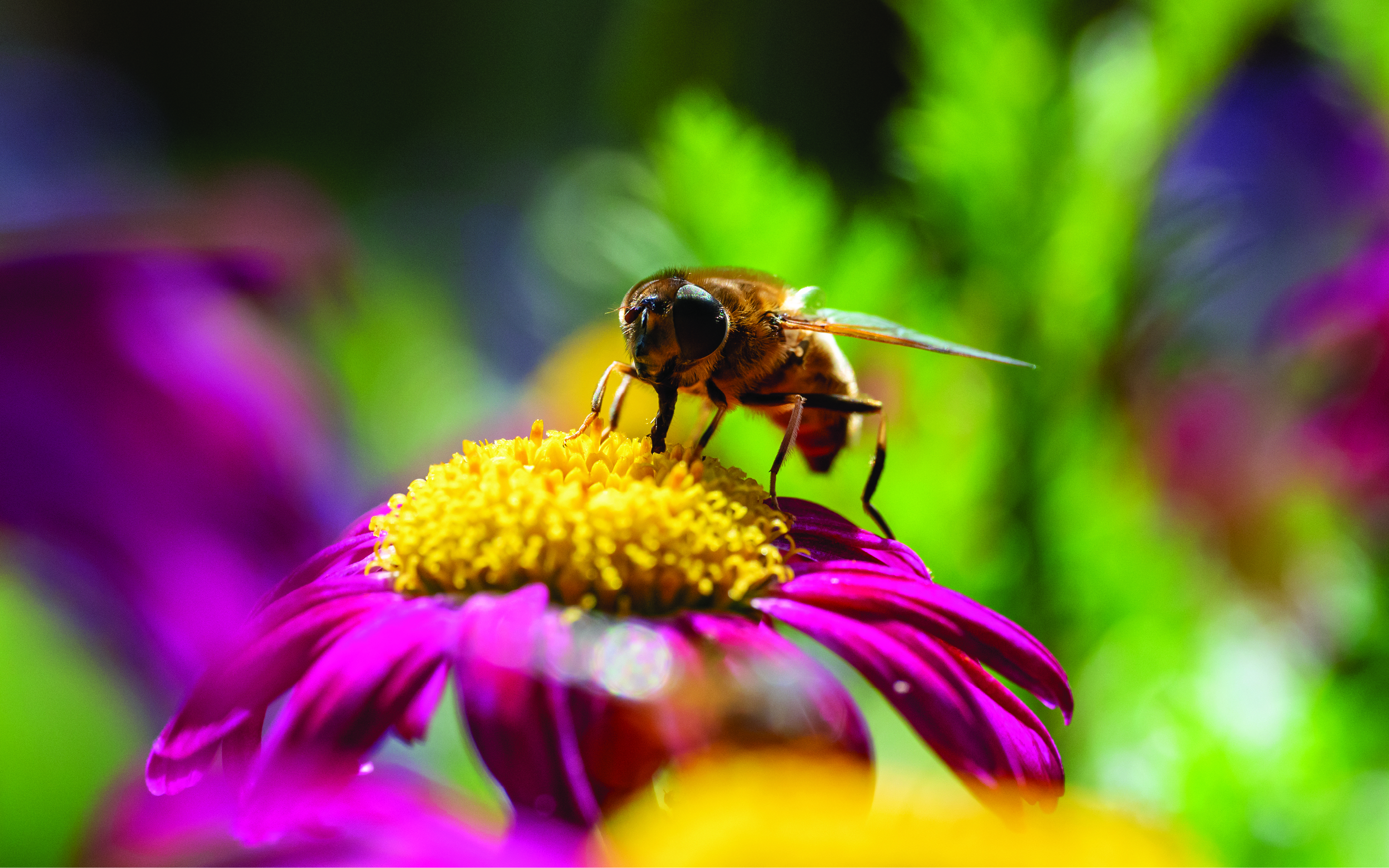
By Scott Rutherford
pring is here. Flowers are blooming. Love is in the air. It’s time to have a serious talk about the birds and the bees… No, not those birds and bees. Actual birds and actual bees. With the gardening season upon us, we’re all making decisions about what to plant, and one thing everyone should consider with their gardening and landscaping is including plants and flowers that attract and help sustain our pollinators.
Attracting pollinators like bees and butterflies is great for the environment, and it’s also good for your garden. “Obviously, it’s better for the flowers,” said Steven Chevalier, owner of Quality Landscape in Shreveport, who also points to their importance to the local ecosystem. “We’ve seen so much of the local bee population declining, which is a big deal.”
Why does it matter? Aside from the environmental impact, which is huge in and of itself, having an abundance of pollinators visiting your yard and garden helps cross-pollinate the flowers, leading to more and healthier blooms.
So, what should you plant to attract bees and their even prettier counterparts, butterflies? According to Chevalier, “There’s tons of stuff you can plant. The most important thing is that they’re abundantly blooming plants. Anything that has flowers that bloom constantly.” Some of his suggestions include coneflower, daisies, lavender, zinnia, and sunflowers. Sunflowers have the added benefit of attracting a variety of songbirds.
Native plants like clover, milkweed, and goldenrod are also great for attracting pollinators.
Chevalier adds that how you plant is as important as what you plant, especially when it comes to attracting pollinators. It’s best to avoid using chemicals, and he even suggests that if you really want to create a great environment for pollinators, it’s best not to mow the area near the flowers. As for the flowers themselves, he says of pollinators, “They’re more attracted to large patches of color. Group your colors together. It’ll attract birds, bees, butterflies… more will be attracted to a large grouping of the same plant.”
Speaking of birds, we can’t forget one of nature’s best pollinators – the hummingbird. On top of being fantastic for the garden, they’re a lot of fun to watch buzzing around the backyard. For attracting hummingbirds, Chevalier suggests “anything with a long, cone-shaped bud.”
Contrary to what you may think, you don’t need a large garden area to attract some buzzy guests. Chevalier points out that the same principle of planting as many of the same colors together as possible applies equally to pots and other small planters. In any case, keep the birds and the bees in mind, whether you’re planting a large flower garden or just putting a pot or two of flowers out on the porch. They’ll help keep your garden blooming and beautiful, and you’ll have done your small part to help our local ecosystem.

